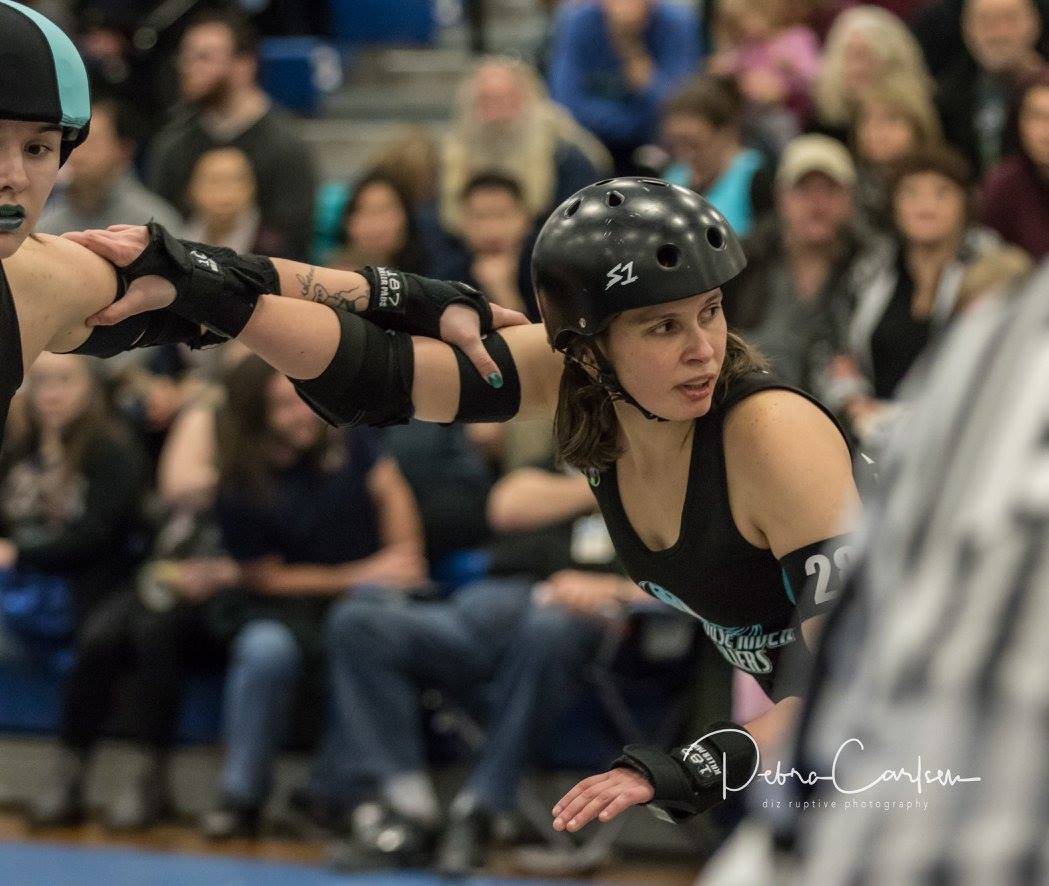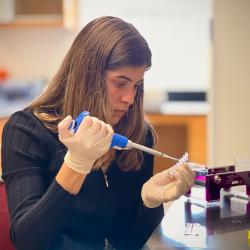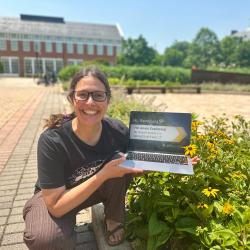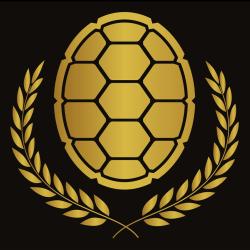Scientist on Skates. Meet Entomologist–and Roller Derby Player–Anahí Espíndola
It's Saturday night and Anahí Espíndola is getting ready to roll, putting on knee pads, elbow and wrist protectors, a mouth guard, a crash helmet—and preparing mentally for competition. University of Maryland students may know her as an Assistant Professor of Entomology, but tonight, Espíndola is a roller girl. She's a starting player on the DC Rollergirls roller derby team.
Roller derby is an action-packed, high-contact sport, where two 5-person teams on roller skates circle a flat track to score points, each team mixing it up with the other and doing whatever it (legally) takes to keep the other team from scoring. When it comes to sports, it’s one of the toughest and, in Espíndola’s opinion, most interesting.
Though she doesn’t talk about roller derby too much in her other life at UMD, Espíndola says battle wounds from the game do occasionally get noticed—sometimes in a fun way.
“Your bruises look like a smiley face,” a student pointed out to her once. Espíndola looked down and noticed that the student was right. “They really did look like a smiley,” she said with a laugh.
Espíndola first found her love for roller skating as a child growing up in Argentina.
But it wasn’t until six years ago while she was a postdoctoral fellow in Idaho that she picked up skating again. One of Espíndola’s friends was a member of the local derby team and invited her to a practice. As she skated around by herself, she discovered that she could still skate. Her friend took notice and invited her to join practice with the beginners’ team. To Espíndola’s surprise, she loved it.
“When I went to the game, I thought there was no way I would actually play this thing,” Espíndola said. “But once I started playing with them, I found that it was actually really fun.”
Espíndola joined the roller derby team in Idaho and continued to skate with them until she moved to Maryland in 2018 to begin working at UMD.
She joined the DC Rollergirls in 2018 and now plays in their competitive Travel Team.
In addition to playing, she has coached beginner skaters and reaped an unexpected benefit—she says it helped shape her teaching style.
“Coaching is teaching,” she said. “There are a lot of strategies that you use in the classroom that you use for coaching, like learning how to teach different types of people and being able to explain things in different ways to reach each person.”
Espíndola also enjoys the community aspect of the game and its welcoming culture.
“Every body size is welcome, every gender expression is welcome, every race is welcome,” she said. “Everybody has a place because the game is built in a way that there's no perfect body. Anybody can be successful if they identify what their strengths are.”
She participates in two practices and one scrimmage a week. Soon, her team will start playing other teams to compete for a spot in the international rankings and qualify for playoffs and tournaments.
“Derby is a very interesting sport that is very complex,” she said. “It's a sport that forces you to be completely present in the moment, which is a really good way to release stress and shut down your brain.”
Somehow, between her time teaching and doing research and her adventures in the roller derby world, Espíndola has found a unique kind of balance in her life—even if it comes with a few bumps and bruises.
She hopes to continue pursuing all those passions for a long time to come.
###
Media Relations Contact: Chelsea Torres, 301-405-5204, cctorres@umd.edu
University of Maryland
College of Computer, Mathematical, and Natural Sciences
2300 Symons Hall
College Park, MD 20742
www.cmns.umd.edu
@UMDscience
About the College of Computer, Mathematical, and Natural Sciences
The College of Computer, Mathematical, and Natural Sciences at the University of Maryland educates more than 9,000 future scientific leaders in its undergraduate and graduate programs each year. The college’s 10 departments and more than a dozen interdisciplinary research centers foster scientific discovery with annual sponsored research funding exceeding $175 million.








